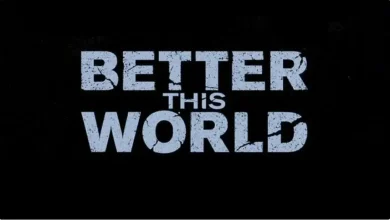The Dangers of Human Gathering Fake: How to Spot and Avoid Fake News

Introduction to Human Gathering Fake
Welcome to the realm of Human Gathering Fake – a world where misinformation lurks in the shadows, waiting to deceive and manipulate unsuspecting minds. In today’s digital age, fake news has become a pervasive threat that can sway opinions, incite fear, and disrupt the fabric of society. Join us as we delve into the dangers of this deceptive phenomenon and uncover human gathering fake how you can arm yourself against its insidious influence.
The impact of fake news on society
Fake news has infiltrated our society, causing confusion and division among individuals. It has the power to sway public opinion, influence political outcomes, and even incite violence. The impact of fake news extends beyond just misinformation; it erodes trust in media sources and institutions that are crucial for a functioning democracy.
When false information spreads like wildfire, it can lead to harmful consequences. People may make decisions based on lies or half-truths without realizing the damage they’re causing. Society becomes more polarized as people retreat into echo chambers, only consuming information that aligns with their beliefs.
The prevalence of fake news challenges the very fabric of our society’s foundation built on truth and transparency. In this digital age, where misinformation thrives, it is essential for individuals to be vigilant in discerning fact from fiction. Educating ourselves on how to spot fake news and promoting media literacy are key steps toward combating its detrimental effects on society.
How Fake News spreads
Fake news spreads like wildfire in today’s digital age, fueled by the speed and reach of social media platforms. With just a click of a button, false information can travel across the globe within seconds, often without any verification or fact-checking.
One common way fake news gains traction is through sensational headlines designed to grab attention and evoke emotional responses. These eye-catching titles are shared rapidly online without readers pausing to question the legitimacy of the content.
Moreover, the phenomenon of echo chambers on social media further amplifies fake news dissemination. People tend to follow and engage with sources that align with their beliefs, creating an environment where misinformation is circulated unchecked among like-minded individuals.
The lack of accountability on some online platforms also contributes to the proliferation of fake news. Without stringent measures in place to verify sources or flag misleading content, inaccurate information can easily masquerade as truth.
To combat the spread of misinformation effectively, individuals must be vigilant about what they consume and share online. By developing critical thinking skills and verifying sources before sharing information, we can collectively work towards curbing the spread of fake news.
Characteristics of fake news
Fake news often carries sensational headlines designed to grab attention and evoke strong emotions. These headlines are crafted to appeal to our biases and beliefs, making us more likely to click and share without verifying the information.
Another characteristic of fake news is its lack of credible sources or references. Genuine news articles usually cite reliable sources, whereas fake news tends to rely on unnamed or dubious sources that cannot be verified.
Moreover, fake news often contains grammatical errors, inconsistencies in reporting facts, or a lack of proper attribution. These red flags can indicate that the information may not be accurate or trustworthy.
Furthermore, fake news stories frequently spread quickly through social media platforms due to their viral nature. People tend to share content impulsively without fact-checking first, leading to the rapid dissemination of misinformation.
It’s essential for readers to critically evaluate the credibility of the source before believing or sharing any piece of information online. By being vigilant and discerning consumers of news, we can help combat the proliferation of fake news in today’s digital age.
How to spot and verify sources
In the age of information overload, it’s crucial to develop a keen eye for spotting and verifying sources. When reading an article or news piece, first check the credibility of the website or publication. Look out for reputable sources known for their accuracy and reliability.
Next, examine the author’s credentials. Are they qualified in the subject matter they’re discussing? A quick search on them can reveal any biases or lack of expertise that might affect the information they present.
Cross-checking facts with multiple reliable sources is key. If a claim seems too good (or bad) to be true, dig deeper. Misinformation often thrives on sensationalism and confirmation bias.
human gathering fake Be wary of clickbait headlines or articles that evoke strong emotions but lack substance. Critical thinking is the best tool for discerning fact from fiction in today’s digital landscape.
Remember, being vigilant about verifying sources not only protects you from falling for fake news but also helps combat its spread in society at large.
Fact-checking websites and tools
In the age of information overload, it can be challenging to separate fact from fiction. This is where fact-checking websites and tools come into play, acting as a reliable compass in the sea of fake newshuman gathering fake.
These platforms are designed to scrutinize claims, investigate sources, and provide users with verified information. They serve as a valuable resource for those seeking clarity amidst the chaos of misinformation that pervades our digital landscape.
By utilizing fact-checking websites and tools, individuals can empower themselves to make informed decisions based on credible sources. These platforms offer transparency and accountability in an era where deceitful narratives often muddle truth human gathering fake.
From Snopes to FactCheck.org to Google’s Fact Check Explorer, there are numerous tools available at our fingertips to combat the spread of false information. Readers must harness these resources effectively in order to navigate through the murky waters of fake news.
Ways to avoid falling for fake news
In an era of information overload, it’s crucial to stay vigilant and discerning when consuming news. One effective way to avoid falling for fake news is to verify the source of the information. Check if it comes from a reputable and trustworthy outlet or publication human gathering fake.
Another strategy is to look beyond the headline. Dive deeper into the article and cross-reference facts with other reliable sources. Remember, sensational headlines are often used to grab attention but may not always reflect the full story accurately.
It’s also essential to question your own biases and beliefs when encountering news stories. Confirmation bias can cloud judgment and make individuals more susceptible to misinformation that aligns with their preconceived notions.
Furthermore, be cautious of sharing unverified information on social media platforms. Take a moment to fact-check before spreading potentially false or misleading content.
By staying vigilant, critical, and proactive in evaluating news sources, we can play our part in combating the spread of fake news in today’s digital landscape human gathering fake.

The responsibility of media outlets and individuals in combating human gathering fake
human gathering fake Media outlets play a crucial role in combating the spread of fake news by ensuring that their reporting is accurate, unbiased, and human gathering fake-checked. Journalists have a responsibility to uphold ethical standards and verify information before publishing or sharing it with the public. By prioritizing integrity over sensationalism, media outlets can help build trust with their audience and prevent the dissemination of false information.
Individuals also have a role in stopping the spread of fake news. It’s essential for people to be critical consumers of information, questioning the sources and validity of what they see online. By fact-checking claims before sharing them on social media or with others, individuals can help stop misinformation from going viral.
Together, media outlets and individuals can work towards creating a more informed society where truth prevails over fiction. It’s a collective effort that requires vigilance, skepticism, and a commitment to upholding factual accuracy in our communication channels.
Conclusion
In a world where information is readily available at our fingertips, it’s crucial to be vigilant in distinguishing fact from fiction. Fake news, also known as Human Gathering Fake, poses a significant threat to society by spreading misinformation and sowing seeds of discord.
To combat the dangers of fake news, individuals must be proactive in verifying sources and cross-checking information before sharing it. Fact-checking websites and tools can serve as valuable resources in this regard. By taking the time to verify the authenticity of news stories, we can help prevent the spread of false information.
Media outlets also play a vital role in combating fake news by upholding ethical standards and ensuring that their reporting is accurate and unbiased. By holding themselves accountable for the content they publish, media organizations can help build trust with their audience and contribute to a more informed society.
It is up to each one of us to take responsibility for our consumption and dissemination of information. By staying informed, critical thinking skills sharp, we can all play a part in fighting against human gathering fake and preserving the integrity of our shared knowledge landscape. Together, we can work towards creating a safer online environment built on truth and transparency.



